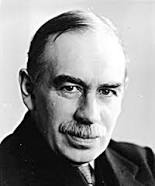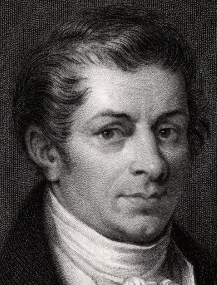Hector McNeill
1
SEEL
Adam Smith went to some lengths to explain what he meant by people's interests and the economic consequences of a love and dedication to a specific type of activity. Charles Darwin (1809–1882) went to some lengths to explain the principle of evolution in terms of the adaptation of different species to their environment. In terms of ecology they were both explaining aspects of the same phenomenon.
Darwin's explanation is perhaps a better basis upon which to come to a conclusion as to what Adam Smith's main message was. This is because Darwin's analysis is not diverted into considerations of economic or financial motivations but explores a natural process.
|
Adaptation of species
Darwin |
The majority of Charles Darwin's origin of species was a consideration of natural advantages gained by animals and plants which were linked to their genetics and the ecosystem within which they survived. Thus tortoises with longer necks were more successful in terms of survival and dominating other tortoises with shorter necks because they were able to reach and eat leaves that grew above ground level. Certain plants are unable to tolerate seasonal extreme of temperature or drought while others can survive. In these cases genetic makeup has determined the relative success of such flora and fauna in different environments.
In terms of animals, however, there are different degrees of adaptation that are not only linked to their genetic makeup but more specifically to their ability to adapt to different circumstances on the basis of reaction and learning. So, lion cubs observing one of their siblings crushed by an elephant bull, will have a tendency to keep out of the way of elephants in the future. The seasonal change in availability of grazing causes herd migration cycles where large mammals and birds can move many miles to maintain the survival of their species. Reproductive cycles are often tied into the natural season cycles.
Basically these processes are ways in which flora and fauna maintain their reproduction and growth as repetitive cycles throughout the life span of each individual. In these processes there are no written words or money. We are not certain that animals and plants following natural instincts physiological mechanisms are doing what interests them.

Smith |
The love and passion of the practitionerWhen it comes to humans there are some differences since different people in different communities can develop, as a result of curiosity, learning and evolving interest, a love and passion for different activities is increased ranging from art and music to a range of capabilities from weaving, to medicine and a host of other activities. The more dedicated a person becomes in pursuing their interests the more their capabilities in carrying the tasks involved develop and the more perfect is the product of their labour. This separation of people's pursuits based on what they become good at doing is the basis of Adam Smith's (1723–1790) division of labour giving rise to a vast range of products and services, each delivered with an advancing degree of competence. One aspect of such specialization is not only the rising quality of output but paradoxically, the reduction in time required to complete each task leading to falling costs and less waste. As a result, people working on this basis in a community are able to sell their production at prices most can afford while at the same time earning enough to satisfy their needs.
The more subtle point here is that producers, following their interests, have a self interest in the sense of love for what they do and taking pride and pleasure in doing it competently and in a way that customers like. The relationship between the producer and the customer is one of mutual interest. However, the sense of self-interest here is not one of all looking out for their benefits at the expense of others and acting to prevent others from doing the same. In other words adaptation and survival in this world of human communities, referring back to Darwin's theory of evolution, progresses on the basis of adaptation through learning and further refinement linked to what the practitioners learn of customers' needs and adapt to satisfying them.
Whereas, in an economy that is not barter based, the receipt of money in return for output is convenient because provides more flexibility to acquire what a practitioner needs, however, it is worth noting that a good deal of the motivation for what each specialist does is not income but rather the involvement in a vocational activity whose rewards are derived as much from the doing as in delivering the output and being paid.
The sense of these messagesAs can be seen, this interpretation of the statements made by Smith and Darwin point to a more benign and positive viewpoint of economic relations, more of a professional and collaborative nature. One of the objectives of the apprentice and master guilds was to not only maintain and improve the understanding and standards in professions but there was also a built in ecological aspect linked to the incomes and location of work. So there was a career structure where income of each individual would rise according to their experience and competence and when apprentices qualified to be artisans or practitioners or masters they were required to work at a location at a distance or involving customers who were not those of other practitioners. Although this was a sort of uncompetitive "closed shop" part of the justification was to maintain incomes and the maintenance of standards over a wider area or community of customers. Naturally, these particular aspects of former activities have broken down.
Economists
Law |
John Law (1671–1729) a Scottish economist made important contributions to analysis both in terms of economic models to explain how the economy worked as well as the role of monetary policy. Law was the first to create a model showing the circular flow of income and expenditure before Richard Cantillon and François Quesnay who appear to have been credited with this development. Law used what he referred to as an island model of Money and Trade (1705) with a circular flow of goods and money between three socio-economic groups of landlords, farmers and manufacturing workers. Even more remarkably Law, 200 years before Keynes, used the circular flow process to show the importance of what is now termed the advance money requirement for an economy suffering from unemployment and underutilization of resources.

Cantillon |
Richard Cantillon (1680-1734) an Irish economist born in France, made use of this model and added the role of entrepreneurs in adding a function of adaptability or adjustment in output in response to disequibria so as to bring supply and demand back into line. Cantillon also introduced an important realization concerning the impact of monetary policy on income disparity which is best understood by reviewing the monetary flow model analysis produced by Jean Baptiste Say (1767–1832) the French economist. Law and Cantillon essentially worked with similar models but Say summarized its function by showing that consumption (called demand by Law) in a stable economy was the same value as production (called supply by Law). Say essentially stated the condition for equilibrium and stability, while an extension of Cantillon's entrepreneurial analysis to technology, innovation and productivity can explain how the Say model can generate real growth. Cantillon's notion of entrepreurship included the notion of risk of not selling output but he was unusual in including everyone as entrepreneurs:
"All the other entrepreneurs, like those who take charge of mines, theaters, buildings, the traders by sea and land, restaurateurs, pastry cooks, innkeepers, etc., as well as the entrepreneurs of their own labor who need no capital to establish themselves, like journeymen artisans, coppersmiths, seamstresses, chimney sweeps, water transporters, live with uncertainty and proportion themselves to their customers. Master craftsmen like shoemakers, tailors, carpenters, wigmakers, etc., who employ journeymen according to the work they have, live with the same uncertainty since their customers may leave them any day." |
Say summarised the balance in production and consumption (Law's supply and demand) as the salaries/wages paid to those employed in goods, service and capital goods production units, made up sum total value of consumption or demand which is the same value as the total production or supply in the economy including all included in Cantillon's entrepreneurs. Very simplistically this was reduced, by others, to say production creates its own demand, Say's expression was painstaking and carefully set out and logical. Amongst his exchanges of correspondence on this matter were those with the English economist Thomas Malthus (1766-1834) who was one year younger that Say.
The Cantillon effectCantillon was the first to explain how this equilibrium would break down under monetary policy, in his day linked to gold, but his analysis applies even more so today under a fiat currency. Cantillon realized that whoever benefited from the monetary policy's first release of money be these gold miners, traders or banks, gained an immediate influx of money spent on a range of goods, services and assets to bolster the wealth of those concerned. The differential impacts of this reality over time was to lower the relative incomes and purchasing power of those working in goods, services and capital goods activities while augmenting the wealth and incomes of those handling the initial influx of injected money under monetary policy. This has come to be known as the Cantillon effect. Real Incomes research (2020) has brought this analysis up to date by identifying the specific encapsulated markets into which considerable amount of injected money flows to the benefit of the wealth and asset ownership of those in these markets. These include:
- Land and real estate as speculative assets
- Precious metals as speculative assets
- Cryptocurrencies as speculative assets
- Commodities as speculative assets
- Corporate shares as speculative assets
- Financial instruments such as derivatives and option conditions as speculative assets driving a grey market larger than the GNP and beyond the boundaries of any policy control
- Savings and cash reserves as non-circulating money
- Offshore investment and reinvestment of offshore profits in offshore activities often as a tax avoidance scheme
All of these financial resources flow away from the supply side production of goods and services and capital goods. This is because, compared with the encapsulated markets, which become highly speculative and attractive in terms of ease of gain, production appears to be risky because the relative wealth and income in the sector is progressively drained away into assets leading to an increasingly lower purchasing power of wage-earners and therefore consumption and therefore real "demand". The falling levels of investment funds offered at increasing interest rates delivers the long term Cantillon effect.

Keynes |

Friedman |
This is why the modern concept of the so-called "trickle down effect" is a product of vivid imaginations rather than fact.
This is the current state of affairs in the United Kingdom, exacerbated by over 40 years of inappropriate monetary policy and the last 12 years of accelerated destruction under quantitative easing. Whereas Say's model has been ridiculed by monetarists and Keynesians for almost a century, since 1975 Keyniesianism and montarism have progressively destroyed that equilibrium model and, with this, the worse the general state of the majority has become, especially over the last 30 years.
The territorial imperative
Say |
The ideal Smithsonian model of the economy, an attractive painting of adaptation and equilibrium has been gradually disintegrated into segments as a result of the destruction of the Say model, where smaller amounts of money flow back into the general economy but remains within these segments in inflationary spirals. This structured disequilibrium invades and destroys the operational resources or the territory of occupation of the supply side producers and wage earners leading to increasing poverty, frustration, resentment and eventual confrontation which can becom violent. This is because any solution attempting to stop this suicidal trend to wage earners is perceived to be a threat to those who occupy the territories in the encapsulated markets. This results in political solutions becoming impaired by the interests of politicians and their political parties. This because they are beholden to the benefactors of their political parties who, in the main, naturally, are those with spare funds to give. By far the largest accumulating wealth remains in the hands of those in the encapsulated markets both in terms of asset holdings, income and, in our political system, power over policy and the media.
It has taken over 270 years for the full implications of the Cantillon effect to have been fully understood in terms of the now conventional monetary policy impacts.
For some time economists and many managers of economic units have not interpreted Smith and Darwin in the ways outlined above but have interpreted Darwin's principles and basic of competition more in line with the law of the jungle where the notion of adaptation has been replaced by brute force and where larger companies are not adapting or innovating but simply buy out smaller innovative groups who are regarded as a threat to their survival. Over the last 150 years economic decision-making has moved from the practitioners running their affairs with an understanding of the mechanical and other processes they deploy and competence to advance those processes. However, financialization has slowly emerged as a dominant basis for decision making. Certainly economies have grown in terms of the variety of goods and services and the income levels of communities across the globe. However, the system is now failing and has created a problematic economic, financial and political state of affairs.
1 Hector McNeill is the Director of SEEL-Systems Engineering Economics Lab.
All content on this site is subject to Copyright
All copyright is held by © Hector Wetherell McNeill (1975-2021) unless otherwise indicated